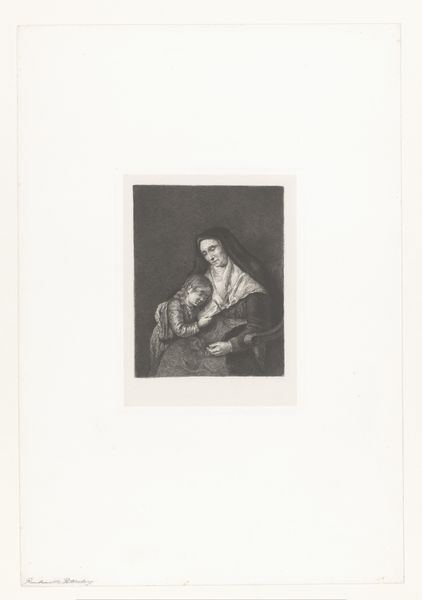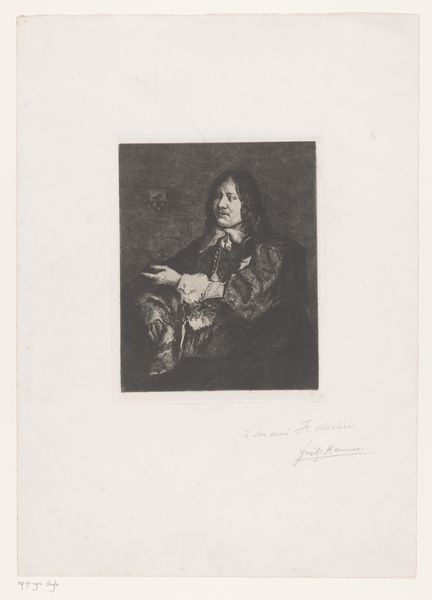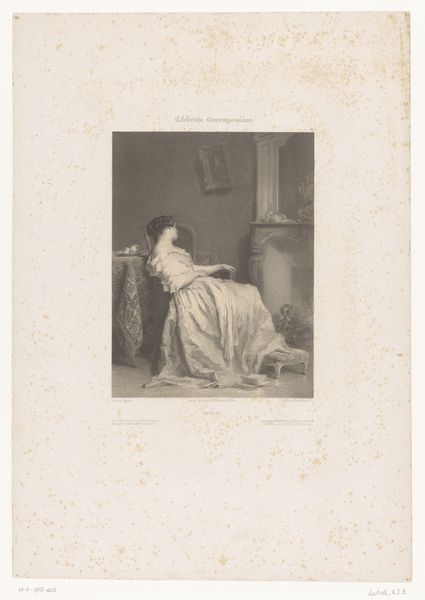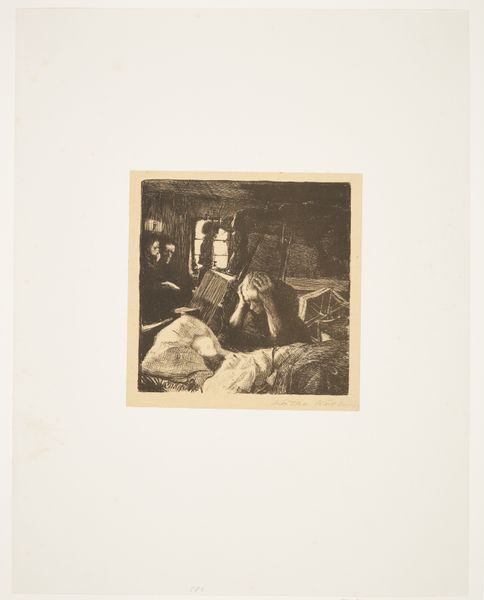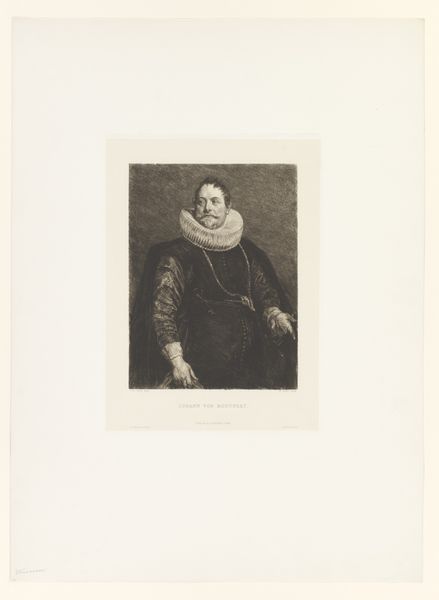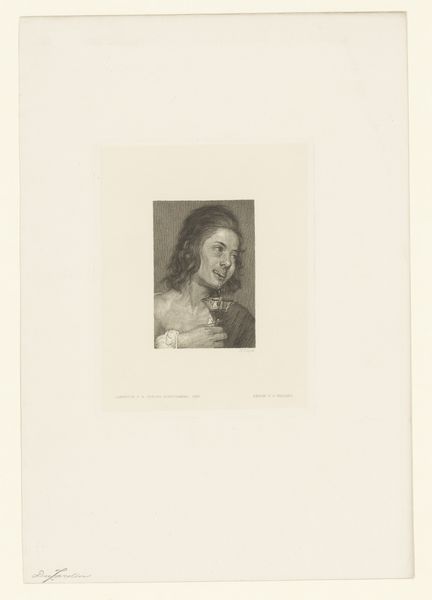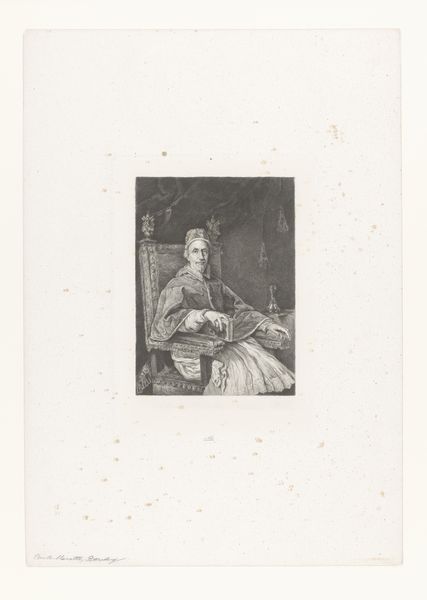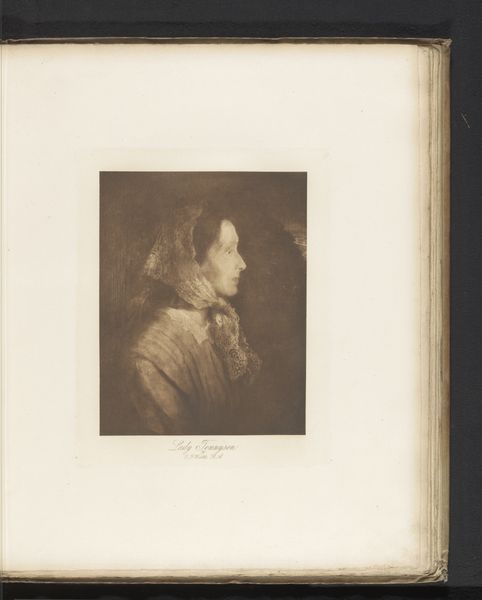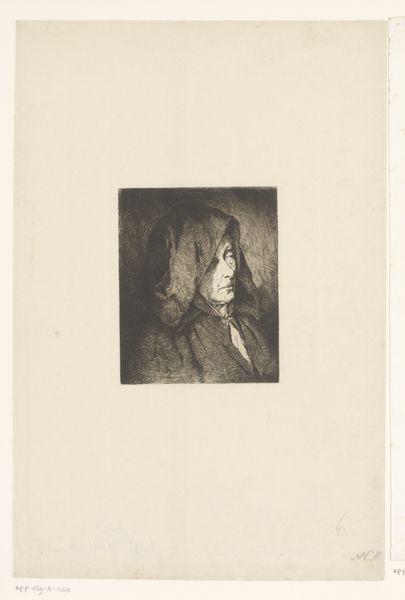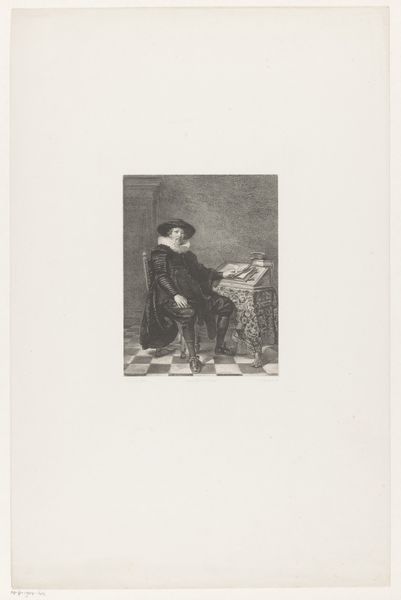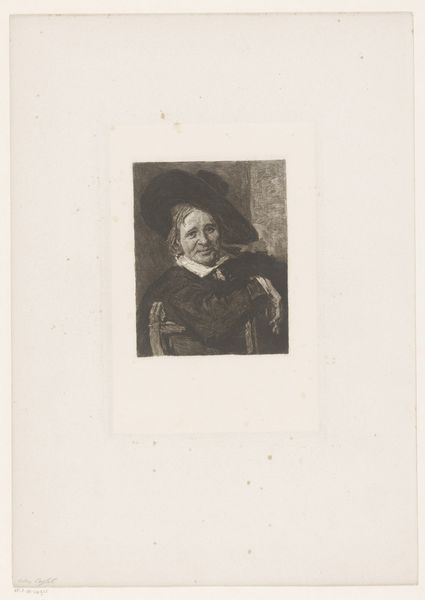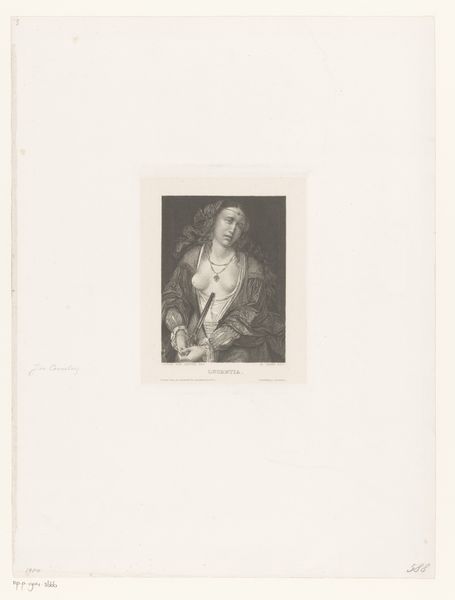
engraving
#
portrait
#
pencil drawing
#
romanticism
#
line
#
history-painting
#
engraving
Dimensions: height 443 mm, width 341 mm
Copyright: Rijks Museum: Open Domain
Curator: Well, isn't this interesting. I see a man, quite dignified and relaxed at the same time. Editor: Indeed. What strikes me first about this engraving, Louis Pierre Henriquel-Dupont's "Portret van Claude-Emmanuel de Pastoret" from 1838, currently residing at the Rijksmuseum, is the weight of historical authority that the image attempts to project, yet it somehow feels...unfulfilled? Curator: Ah, I understand what you mean. The sitter, Claude-Emmanuel, seems posed in a way to invoke contemplation, almost inviting the viewer to engage with his wisdom. The hand gently placed on his cheek is a classical signifier for thoughtfulness. It could signify reflection on past accomplishments or maybe the burden of historical responsibility, with that flowing robe and powdered wig. Editor: Exactly. That's precisely what the image is trying to convey— Pastoret's integral position within the French sociopolitical structure. But the very choice of engraving as the medium is interesting given it creates multiple originals that could have dispersed his image widely. It reminds me that Pastoret experienced the turmoil of the Revolution firsthand, navigating between the aristocracy and shifting revolutionary tides before eventually finding himself as a leading figure in the Restoration era. He lived through much, and served various masters. Curator: A visual sign of such complexities! The textures that Henriquel-Dupont achieves are rather astounding. Look closely at the meticulous rendering of the fabric – the interplay of light and shadow, lending an almost tactile presence. The very linearity of the engraving helps to highlight these textures, too, wouldn't you agree? They add an almost romantic dimension to a very rigid socio-political setting. Editor: Without a doubt. It seems Pastoret used his cultural and political navigation to his advantage. Despite these surface displays of authority, something about the gaze feels... guarded, as if the artist captured him in a rare unguarded moment during the process of his cultural role acting. He seems weary. Curator: That is astute. It is almost like he bears the burden of navigating through turbulent historical tides, forever etched in those engraved lines. Editor: Ultimately, Henriquel-Dupont gives us not merely a portrait, but also a profound historical record; not just about the figure, Claude-Emmanuel de Pastoret himself, but about an age of societal change in France and its ripple effects within collective visual culture. Curator: Absolutely, making us wonder how personal and private anxieties seep into these carefully cultivated performances of political position!
Comments
No comments
Be the first to comment and join the conversation on the ultimate creative platform.
